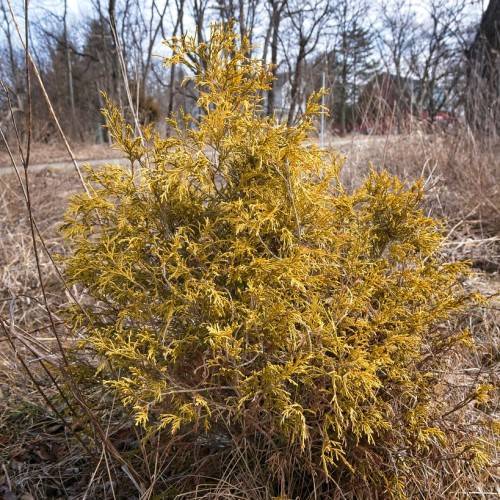
Japanese falsecypress
Chamaecyparis pisifera 'Lemon Thread'
Also Known As - Japanese Falsecypress,Sawara Falsecypress,sawara cypressCycle:
Perennial
Watering:
Average
Hardiness Zone:
4
Flowers:
Flowers In Spring
Sun:
Full sun
Fruits:
Fruits Ready In Fall
Leaf:
Yes
Growth Rate:
Moderate
Maintenance:
Low
Care Level:
Moderate
watering
The Japanese falsecypress (Chamaecyparis pisifera 'Lemon Thread') should be watered regularly, approximately twice a week, during its active growing season. In hot and dry weather, the plant may require more frequent watering, especially if the soil begins to dry out. During the winter months when the plant is inactive, watering should be reduced to once a week. During both the summer and winter, it is important to check the soil moisture weekly to ensure the plant has enough water. When watering, the plant should be given enough water to thoroughly moisten the soil but not to the point of water-logging.
sunlight
The Japanese falsecypress (Chamaecyparis pisifera 'Lemon Thread') thrives in bright, indirect sunlight. Depending on the time of year, the plant should receive at least 4-6 hours of sunlight per day. During the spring and summer months, it can sustain up to 8 hours of sunlight. However, during the fall and winter months it should be kept out of direct sunlight as this could cause the leaves to burn and damage the plant.
pruning
The Japanese falsecypress (Chamaecyparis pisifera 'Lemon Thread') should be pruned during the late spring and early summer months when new growth is present. Pruning should involve removing any dead, weak, damaged, or diseased branches, as well as thinning out the interior of the shrub. Be sure to leave some of the new growth on the tips of the branches for a more attractive look. When pruning, always cut back to just above an outward-facing bud. With Japanese falsecypress, some shaping or sculpting of the branches can also be done. With careful pruning, the falsecypress can be shaped into small clipped trees, formal hedges, and many other shapes.
